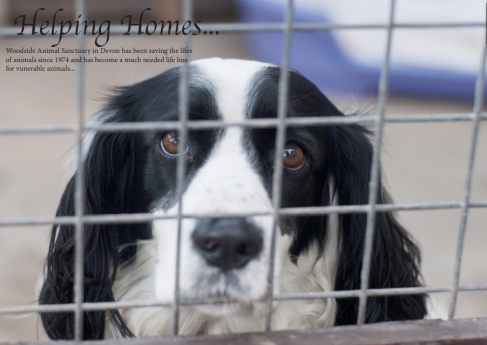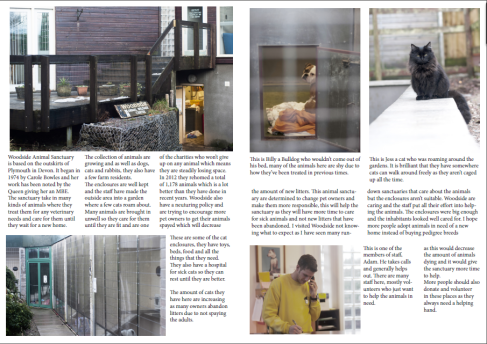For a project we had 24 hours to find an interesting story in Plymouth. I was going to at first do the aquarium or market but then I found an
Woodside Animal Sanctuary just outside of the city center. The staff were really friendly and had no problem with me going and taking photos of the animals, I went to the inside part first where the sick animals were then I went outside where there was a garden with chickens and cats wandering around. These were the staff pets and weren't for sale along with some of the hand reared goats, pig and a friendly collie. I started photographing the dog enclosures and got a few shots of them in their beds and looking at me inquisitively, they then started barking at me and I decided to leave them alone. The cat enclosures were on the other side of the garden and there were quite a lot of them, some of them moved a lot which made it hard to get a shot but a few posed which was amusing.

I think this shoot went really well and I am pleased with the outcome, I'd like to do more work with them and spend a whole day there instead.
For a project we had to use this story in an Indesign layout so we can see how it would look published, which makes it feel more professional. This was my layout and it needs a bit of work especially with the writing but I like the opening page.










